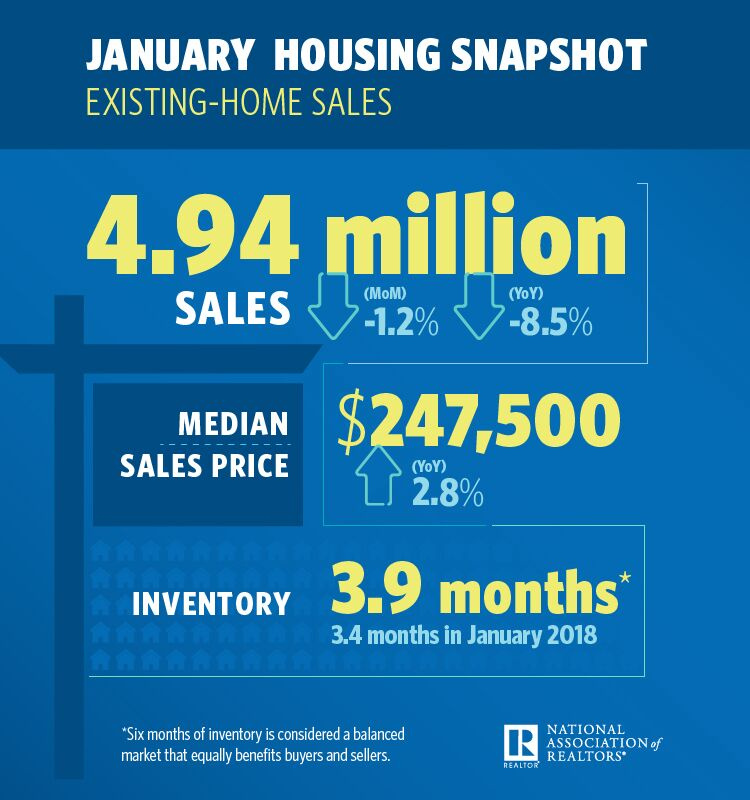The winter months have proven to be a sluggish time for home sales. January was the third consecutive month in which existing-home sales posted a drop, the National Association of REALTORS® reported Thursday. All regions of the U.S. saw a drop in sales except for the Northeast.
Total existing-home sales, which are completed transactions on single-family homes, townhomes, condos, and co-ops, dropped 1.2 percent in January compared to December. Sales are down 8.5 percent from a year ago, and now are at the lowest level since November 2015.
However, NAR Chief Economist Lawrence Yun expects a reversal in home sales soon. “Existing-home sales in January were weak compared to historical norms; however, they are likely to have reached a cyclical low,” Yun says. “Moderating home prices combined with gains in household income will boost housing affordability, bringing more buyers to the market in the coming months.”

© National Association of REALTORS®
Here’s an overview of NAR’s latest housing report, based on January sales:
Home prices: The median existing-home price for all housing types in January was $247,500, up 2.8 percent from a year ago. The median home price growth is at the slowest pace since February 2012, Yun says. “Lower mortgage rates from December 2018 had little impact on January sales; however, the lower rates will inevitably lead to more home sales,” he notes.
Days on the market: Thirty-eight percent of homes sold in January were on the market for less than a month. On average, properties remained on the market for 49 days in January, up from 42 days a year ago.
Housing inventories: At the end of January, the total housing inventory rose to 1.59 million, up from 1.52 million a year ago. Unsold inventory is at a 3.9-month supply at the current sales pace.
While the uptick in the inventory is a welcome sign, Yun says the market continues to suffer from an inventory shortage. “In particular, the lower end of the market is experiencing a greater shortage, and more home construction is needed,” Yun says. “Taking steps to lower construction costs would be a tremendous help. Local zoning ordinances should also be reformed, while the housing permitting process must be expedited; these simple acts would immediately increase homeownership opportunities and boost local economies.” It’s a sentiment that has been shared by economists and leaders at the 2019 International Builder Show in Las Vegas this week.
Overall, “decelerated sales and the increases in inventory will work in favor of potential home buyers, putting them in a better negotiating position heading into the spring months,” says NAR President John Smaby. “On top of that, low interest rates will bring an additional $80 per month savings compared to the rates of just a few months ago.”
The average 30-year fixed-rate mortgage fell to 4.46 percent in January, down from 4.64 percent in December, Freddie Mac reports. The average commitment rate for all of 2018 was 4.54 percent.
